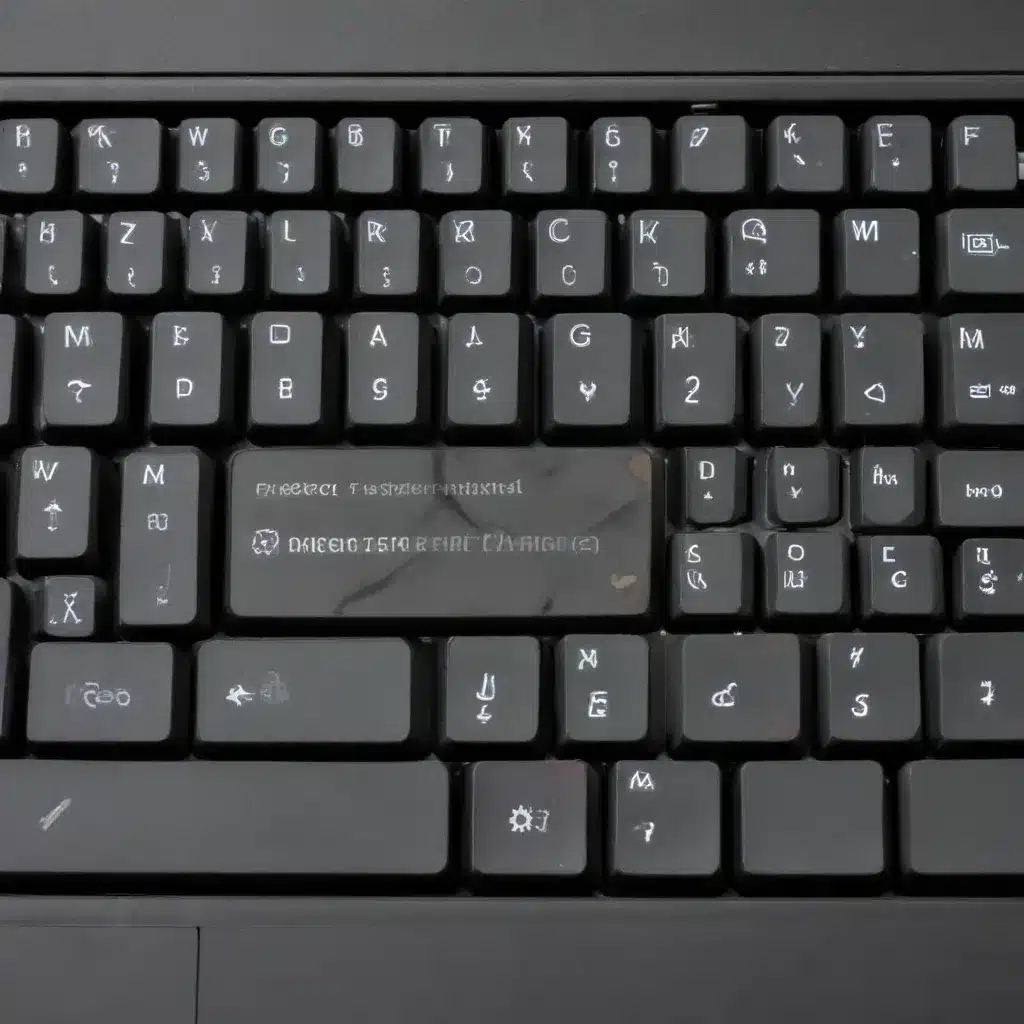
Understanding the Membrane Keyboard Stigma
As an experienced IT professional, I often encounter strong opinions about the perceived shortcomings of membrane keyboards. Many tech enthusiasts and gamers have long held the belief that membrane keyboards are inherently inferior to their mechanical counterparts. However, this sentiment may not always reflect the diverse preferences and needs of all users.
The common criticisms of membrane keyboards often center around their perceived lack of “tactile feedback.” Mechanical keyboards, with their distinct “clicky” or “tactile” switches, are praised for providing a more satisfying and responsive typing experience. Meanwhile, membrane keyboards are sometimes accused of feeling “mushy” or “unresponsive.”
But what if you’re someone who genuinely prefers the feel of a membrane keyboard? As one Redditor eloquently expressed, “What if someone (like myself) don’t like mechanical keyboards? I feel like I’m in the minority but like I realistically prefer to use membrane over mechanical. I like the feeling better, I type a lot better (unorthodox typing style).” This user’s sentiment highlights the fact that personal preferences can be highly subjective when it comes to keyboard feel and performance.
Restoring Tactile Feedback on Membrane Keyboards
If you’re a membrane keyboard enthusiast, but you’re seeking to enhance the tactile experience, there are several practical solutions you can explore. These modifications can help restore the satisfying “click” or “bump” that some users crave, without abandoning the membrane keyboard format entirely.
Adhesive Tactile Bumps
One of the simplest and most affordable solutions is to add tactile bumps to your keyboard. This can be achieved by applying small stickers, pieces of tape, or even sand grains to the key surfaces. These tactile cues can help you quickly identify and navigate the key positions, especially for frequently used keys like the arrow keys or function keys.
Some popular options include:
- Vinyl or office tape: Cut small squares or strips and apply them to the desired keys.
- Clear nail polish: Apply a small dot of nail polish to create a tactile marker.
- Sand grains: Carefully glue a few grains of sand to the key surfaces.
The advantage of these solutions is that they are inexpensive, easily customizable, and can be removed or adjusted as needed. However, it’s important to test the materials on a spare keyboard or inconspicuous area first to ensure they don’t damage the keyboard’s surface.
Keyboard Membrane Modifications
For a more permanent solution, you can consider modifying the keyboard membrane itself. This approach involves strategically cutting out sections of the membrane to create tactile bumps or grooves on the key surfaces.
Here’s how you can do it:
- Carefully remove the keyboard membrane from the keyboard assembly, taking note of the original orientation.
- Use a hobby knife or utility knife to carefully create grooves or bumps on the membrane, targeting the keys you want to enhance.
- Make the grooves or bumps wide and thick enough to be easily felt by your fingertips, while maintaining the same general shape as the original key contours.
- Carefully reassemble the keyboard, ensuring the modified membrane is properly aligned.
This method provides a more seamless and integrated tactile experience, as the modified membrane becomes part of the keyboard’s overall feel and responsiveness. However, it does require a more hands-on approach and the risk of potentially damaging the keyboard if not executed with care.
Dedicated Tactile Keypads
If you’re not interested in modifying your existing keyboard, another option is to consider a dedicated tactile keypad or gamepad. Products like the Nostromo or Logitech G13 offer pre-configured keys with built-in tactile feedback, often catered towards gamers and power users.
These specialized input devices can be used in conjunction with your main keyboard, providing a supplemental set of customizable, tactile-enhanced keys for tasks like navigation, media control, or gaming macros. While this solution may require additional desk space and setup, it can be an effective way to integrate tactile feedback without compromising your overall keyboard preferences.
Embracing Personal Keyboard Preferences
At the end of the day, the choice between membrane and mechanical keyboards should be a matter of personal preference, not a rigid dictum handed down by the tech community. As an experienced IT professional, I recognize that there is no one-size-fits-all solution when it comes to keyboard selection.
Whether you prefer the soft, cushioned feel of a membrane keyboard or the satisfying click of a mechanical one, the most important factor is finding the input device that allows you to work and game comfortably and efficiently. By exploring the various modification techniques outlined in this article, you can tailor your membrane keyboard to better suit your individual needs and preferences, restoring the tactile feedback you desire.
Remember, the keyboard is an extension of your hands, and the best choice is the one that empowers you to be your most productive and comfortable self. So don’t be afraid to embrace your membrane keyboard preferences – with a little creativity and customization, you can enjoy the typing experience you truly prefer.
For more IT insights and practical solutions, be sure to visit ITFix.org.uk for a wealth of informative articles and expert advice.
Key Takeaways
- Membrane keyboards are often stigmatized as “inferior” to mechanical keyboards, but personal preferences can vary.
- Tactile feedback can be restored on membrane keyboards through the use of adhesive bumps, membrane modifications, or dedicated tactile keypads.
- Adhesive solutions like tape, nail polish, or sand grains provide an easy and reversible way to add tactile cues.
- Modifying the keyboard membrane itself can create a more integrated tactile experience but requires more hands-on work.
- Dedicated tactile keypads offer a supplemental solution for those seeking enhanced feedback without replacing the main keyboard.
- Ultimately, the best keyboard is the one that suits your individual needs and preferences, whether it’s membrane or mechanical.












